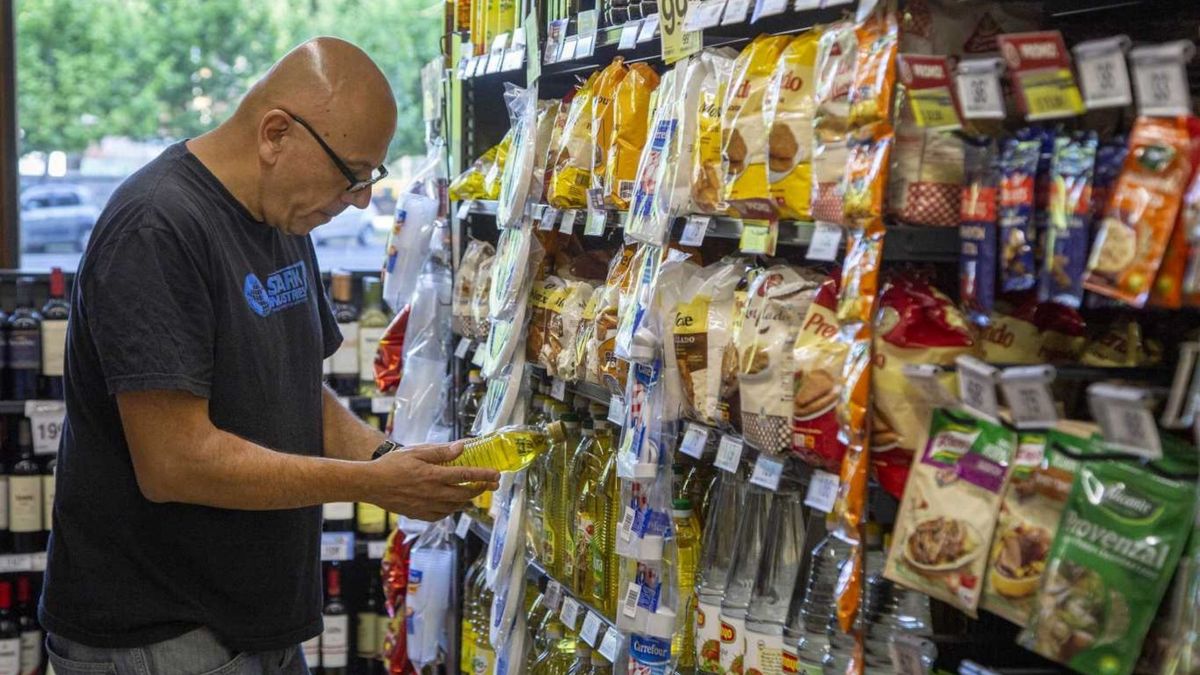It is that in the independent supermarkets registered a year-on-year drop of 9.8%while in the large chains saw growth of 1.7%according to the report. “Self-services suffered a significant setback, continuing a downward trend that began in July. The reasons are those that we have already mentioned, for example, the price difference between channels, as a result of the unequal inflationary speed, the comparison bases, an increasingly affected purchasing power, to name a few”, the study pointed out.
The price Gap, especially in the products reached by the official programs, has a full impact on the consumption in local shops, since consumers “migrate” to large stores in search of better offers.
In fact, as he explained to Ambit the director of Scentia, Osvaldo Del Río, “the price gap between the different channels, in a basket of about 10 products, already exceeds 23 points” and surely it is going to expand” from the start-up of Fair Prices. That explains, she said, part of the difference in how each channel varies.
As highlighted in the report, in supermarkets there were setbacks in “alcoholic and non-alcoholic beverages and clothing and household cleaning”. All baskets presented drops in self-services.
Concern for the future
The trend, it seems, would continue for the next months. It is that the Fair Prices program launched by the Government does not include local businesses and that could, they say, increase the gap and migration to large stores.
“Effectively this difference is going to accentuate in the coming months. Because the small store, the self-service, does not have access to this program. Even many express formats of the chains do not have the more than 1,800 products reached. Then, a displacement towards the large commercial surfaces is generated, which represents 30% of the commercialization, ”said Damián Di Pace, director of the Focus Market consultancy.
“Then, a price distortion is first generated in the economy and a situation is generated where you find these references in large stores and not in the rest of the mouths. The level of drop due to substitution from one channel to another is accentuated more”, Di Pace remarked.
In fact, in this regard, the Assembly of Small and Medium Entrepreneurs (Apyme) warned that micro, small and medium-sized companies dedicated to local trade are not being reached for the benefits of the price agreement within the framework of the Fair Prices Program.
The entity observed in a statement that “under the specifications of the Program The way in which local businesses, made up of hundreds of thousands of small and medium-sized companies, will be supplied with the 1,788 products with regulated prices is not contemplated.“. The distribution of the merchandise of these sectors is carried out through official distributors, self-service wholesalers or even directly from the factory.
“However, in many cases these supply points sell the products included in the program at the same price that the SME should sell them at or with little difference, which would not allow a reasonable minimum profit margin to offset their costs,” explained Apyme.
In that scenario, the smallest businesses made their concern public to the Secretary of Commerce. “We propose that we have already gone through this. The wholesaler ends up selling to us at the same price that we should offer them to customers. And 80% of the merchandise we buy from them,” said Fernando Savore, president of the Federation of Storekeepers of the province of Buenos Aires (FABA).
Source: Ambito
David William is a talented author who has made a name for himself in the world of writing. He is a professional author who writes on a wide range of topics, from general interest to opinion news. David is currently working as a writer at 24 hours worlds where he brings his unique perspective and in-depth research to his articles, making them both informative and engaging.




